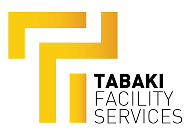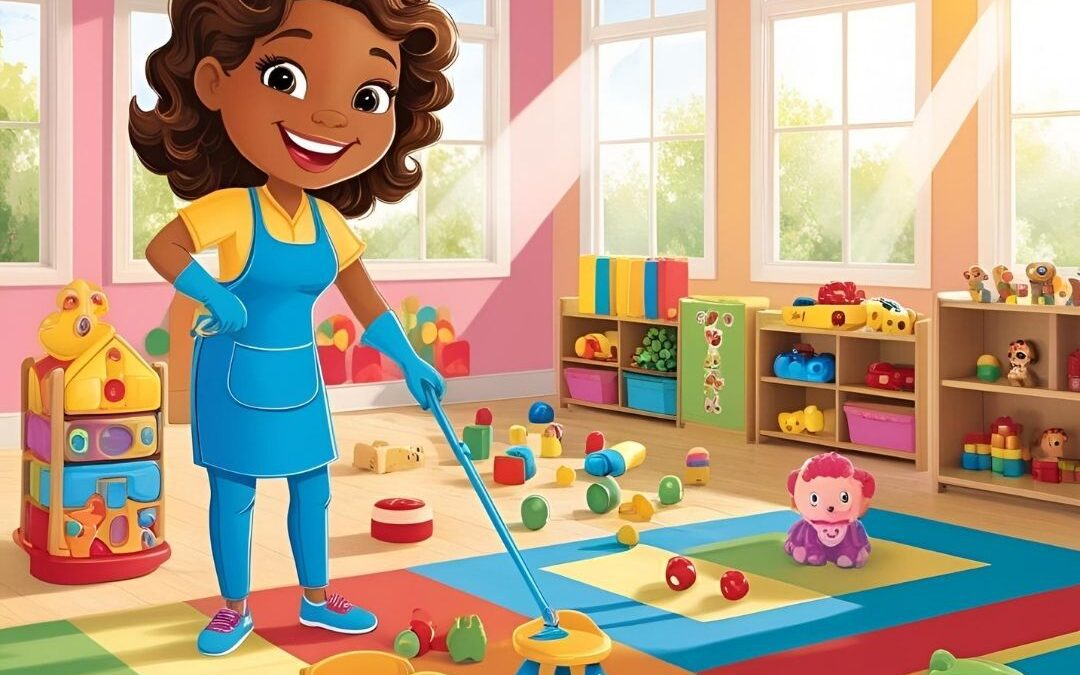Table of Contents
Implementing Proven Techniques in Child Care Cleaning Services
How to Choose a Professional Child Care Cleaning Service Provider
1. Introduction to Child Care Cleaning Services
Ensuring that children have a safe and healthy environment is a top priority for any care facility. From the outset, Child Care Cleaning Services play an essential role in maintaining high standards of hygiene and safety in these settings. Clean and sanitized spaces reduce the spread of infections, boost the confidence of parents, and provide staff with an environment conducive to nurturing young minds. In addition, regular cleaning routines help prevent accidents and maintain facilities to regulatory standards.
Moreover, thoughtful cleaning practices not only protect health but also contribute to building community trust. As you read on, you will discover effective practices and valuable insights to optimize your cleaning protocols, specifically tailored for child care centers.
2. The Importance of Child Care Cleaning Services
In the contemporary landscape, maintaining clean environments is more than a regulatory requirement—it is a cornerstone of excellent child care. Child Care Cleaning Services ensure that every nook and cranny in a facility is thoroughly sanitized, thereby reducing the risk of illness and ensuring compliance with health regulations.
For instance, children are more susceptible to infections than adults, which makes the role of cleaning professionals absolutely vital. Furthermore, cleaner spaces positively influence both the physical and psychological well-being of the children and staff. Therefore, meticulous cleaning routines and environmentally friendly cleaning practices are critical components that directly impact the standard of care in these facilities.
To supplement your own research, authoritative resources like the Environmental Protection Agency (EPA) and Wikipedia on Cleaning provide additional insights into the significance and effective strategies behind modern cleaning methods.
3. Key Strategies for Effective Child Care Cleaning Services
Implementing robust strategies in Child Care Cleaning Services is the key to unlocking a consistent, high-quality cleaning routine that meets industry standards. Below, we delve into several strategies that are crucial in ensuring safe, hygienic, and inviting child care environments.
3.1. Child Care Cleaning Services and Safety
An emphasis on safety is paramount in any cleaning protocol for child care facilities. When you incorporate safety-focused cleaning routines, you not only protect the children but also the staff. Regular disinfection of high-touch areas (such as door handles, toys, and shared equipment) helps minimize the spread of pathogens.
Transitioning from routine cleaning to proactive safety measures not only prevents accidents but also instills confidence in parents and caregivers.
Furthermore, the integration of safety checklists and regular staff training ensures that every team member is alert to potential hazards and knows how to promptly address them. For example, using color-coded cleaning tools can prevent cross-contamination between different areas of the facility.
3.2. Child Care Cleaning Services and Hygiene
Maintaining impeccable hygiene is a core component of high-quality Child Care Cleaning Services. Daily cleaning regimens, including disinfecting surfaces and replenishing sanitizing supplies, are essential in inhibiting the growth of harmful bacteria and viruses.
Moreover, effective hygiene practices extend beyond just cleaning; they encompass educating both staff and children about the importance of hand washing and personal cleanliness.
In addition, leveraging advanced cleaning equipment—such as electrostatic sprayers and UV sanitization—can significantly enhance cleaning efficiency. These innovations offer a more comprehensive solution to tackling stubborn pathogens and ensuring the environment remains sterile and safe.
3.3. Child Care Cleaning Services: Risk Management
Risk management within the realm of Child Care Cleaning Services involves proactive measures to prevent contamination and accidents. Establishing rigorous protocols for cleaning routines and crisis management can make a significant difference during outbreaks or emergency situations.
Therefore, developing a contingency plan that includes detailed cleaning schedules, rapid response teams, and clear communication pathways is indispensable.
Moreover, routine audits, proper documentation, and regular feedback loops ensure that every aspect of the cleaning process is optimized, making the child care environment not only clean but also secure.
4. Implementing Proven Techniques in Child Care Cleaning Services
It is crucial to understand that successful Child Care Cleaning Services are built on a foundation of proven techniques and ongoing refinements. Below, we explore some of the most effective methods to incorporate into your daily operations.
4.1. Child Care Cleaning Services: Daily Routine Practices
A well-structured daily routine is a vital element of Child Care Cleaning Services. This routine should cover routine tasks such as dusting, vacuuming, mopping, and sanitizing high-touch areas.
For instance, dedicating specific times during the day to handle cleaning tasks ensures that the facility is consistently maintained without compromising on operational activities.
Additionally, implementing checklists can aid in tracking progress and ensuring that every area receives adequate attention. Such regularity not only improves cleanliness but also reduces the overall workload in the long run.
In addition, routines that incorporate feedback from staff can further streamline processes, making daily tasks more efficient and effective.
4.2. Child Care Cleaning Services: Deep Cleaning Strategies
While daily routines address immediate cleaning needs, periodic deep cleaning is essential for long-term maintenance. Child Care Cleaning Services should include scheduled deep cleaning sessions that target areas not covered in regular cleaning cycles.
Consequently, deep cleaning ensures that hard-to-reach areas are sanitized and that any accumulated grime is effectively removed.
Deep cleaning may involve specialized equipment such as steam cleaners and industrial-grade disinfectants. By integrating these strategies with routine practices, child care facilities can achieve a state of sustained cleanliness that benefits everyone.
5. How to Choose a Professional Child Care Cleaning Service Provider
Selecting the right provider is a pivotal decision when it comes to Child Care Cleaning Services. It is important to evaluate potential service providers based on their credentials, experience, and the thoroughness of their approach.
5.1. Child Care Cleaning Services: Evaluating Credentials
When researching potential service providers, focus on those with robust industry certifications and a proven track record.
For example, accreditation by organizations such as the International Sanitary Supply Association (ISSA) or compliance with Australian health and safety regulations indicates a high standard of service.
Furthermore, providers should be transparent about their cleaning processes, employee training, and the eco-friendly practices they implement. In addition, requesting case studies or testimonials from previous clients can help verify the quality and reliability of their services.
5.2. Child Care Cleaning Services: Customer Testimonials
Customer feedback plays an integral role in selecting a cleaning service provider. When you come across testimonials that highlight efficiency, attention to detail, and exceptional service in Child Care Cleaning Services, you can be more confident in your decision.
Moreover, reading reviews and case studies offers insights into how different providers handle the unique challenges of a child care environment.
For additional guidance, you may visit reputable review platforms or directly request references from providers to better understand their performance history.
6. Child Care Cleaning Services: Advanced Tools and Technology
Adopting advanced tools and technology is crucial for maximizing the efficiency and effectiveness of Child Care Cleaning Services. In modern cleaning environments, the integration of technology can significantly reduce the time and effort required to maintain high standards.
For instance, smart sensors that monitor cleanliness levels, automated scheduling software, and data-driven cleaning audits are transforming traditional cleaning models.
Furthermore, the use of high-tech cleaning equipment—such as robotic vacuum cleaners and UV-C light sanitizers—ensures that spaces are disinfected thoroughly and more consistently compared to manual methods.
In addition, advanced technology not only streamlines operations but also contributes to the overall safety and reliability of child care facilities. Incorporating these innovations can lead to measurable improvements in both service quality and operational efficiency.
7. Sustainability in Child Care Cleaning Services
Today’s consumers and regulatory bodies alike are increasingly focusing on sustainability. Child Care Cleaning Services that employ eco-friendly practices are in high demand, particularly in regions like Australia where environmental stewardship is a priority.
Sustainable cleaning practices involve the use of biodegradable cleaning agents, energy-efficient equipment, and waste minimization strategies.
For example, selecting environmentally friendly products not only reduces harm to the environment but also creates a healthier atmosphere for children and staff.
Moreover, many facilities now incorporate sustainable practices into their overall operational strategy. By opting for providers that prioritize green cleaning, you send a positive message to both your clients and the community. Additionally, sustainable practices can sometimes yield long-term cost savings, which is another compelling reason for their adoption.
8. Frequently Asked Questions (FAQs)
Below are some of the most frequently asked questions regarding Child Care Cleaning Services, along with clear, concise answers:
FAQ 1: What makes Child Care Cleaning Services different from regular cleaning services?
Answer:
Child Care Cleaning Services are specifically tailored to meet the hygiene and safety needs of care facilities. They emphasize non-toxic products, frequent disinfection of high-touch surfaces, and compliance with strict health regulations to ensure a safe environment for children.
FAQ 2: How often should deep cleaning be performed in child care facilities?
Answer:
While daily cleaning is essential, deep cleaning is recommended on a monthly or quarterly basis to reach areas that accumulate dust or bacteria over time. This comprehensive approach helps maintain high safety standards in child care environments.
FAQ 3: Can professional cleaning services improve the overall safety of a child care facility?
Answer:
Absolutely. Professional services have specialized training and certifications that focus on sanitizing high-risk areas, ensuring that both children and staff are less likely to be exposed to harmful pathogens.
FAQ 4: What kind of cleaning products are used in Child Care Cleaning Services?
Answer:
Providers typically use non-toxic, eco-friendly cleaning agents that are safe for children. These products are effective yet gentle, reducing the risk of allergic reactions or chemical exposure while maintaining maximum cleanliness.
FAQ 5: Where can I find more information about the industry standards for Child Care Cleaning Services?
Answer:
For further guidance, consider looking at industry resources such as the International Sanitary Supply Association (ISSA) and the EPA’s cleaning guidelines. These resources provide comprehensive information on safety standards and best practices.
9. Conclusion: Transforming Child Care Cleaning Services
In conclusion, Child Care Cleaning Services are vital in fostering a safe, hygienic, and welcoming environment for both children and staff. By implementing daily routines, deep cleaning strategies, and integrating advanced technologies, you can substantially enhance the quality of care provided in your facility.
Therefore, if you are looking to elevate the cleanliness and safety standards of your facility, consider partnering with a reputable professional service. To learn more about industry-leading practices and services, visit our dedicated page on Facility Services.
Every successful cleaning initiative requires a balanced approach—one that combines innovative technology, sustainable practices, and a commitment to the well-being of the children in care. By investing in thorough and reliable Child Care Cleaning Services, you’re not only complying with regulations but also building trust with parents and caregivers alike.
In addition, a clean and safe environment ultimately supports better developmental outcomes for children, making every effort count.
Embark on the journey towards improved hygiene today and experience the transformational benefits of a dedicated child care cleaning service. Reach out, ask questions, and explore tailored solutions to keep your facility at the forefront of care excellence.

